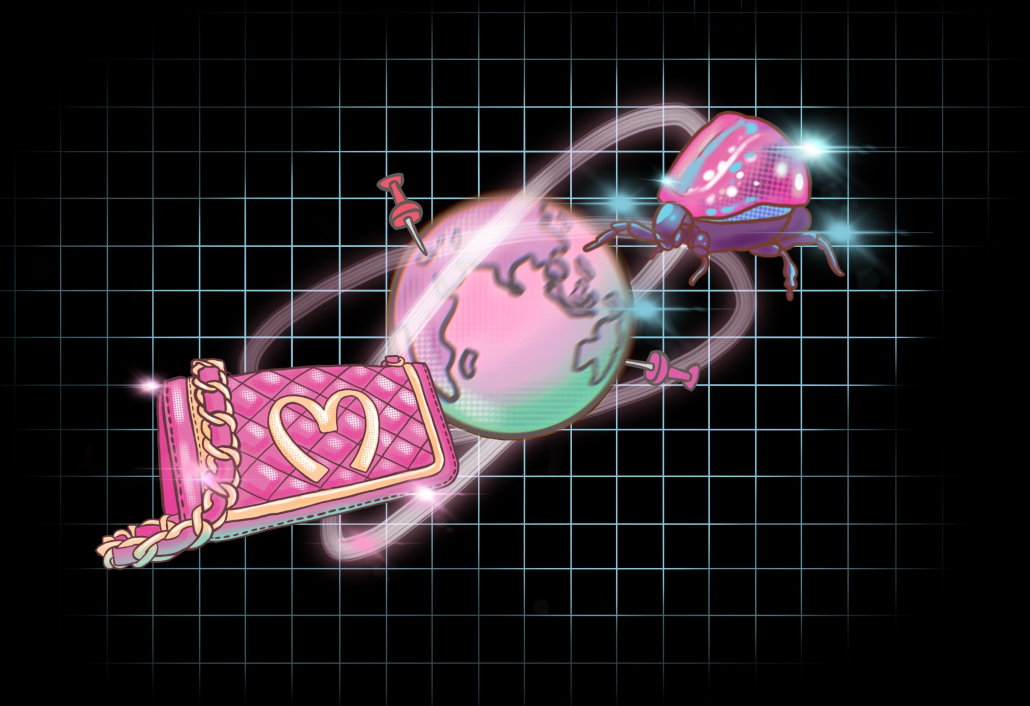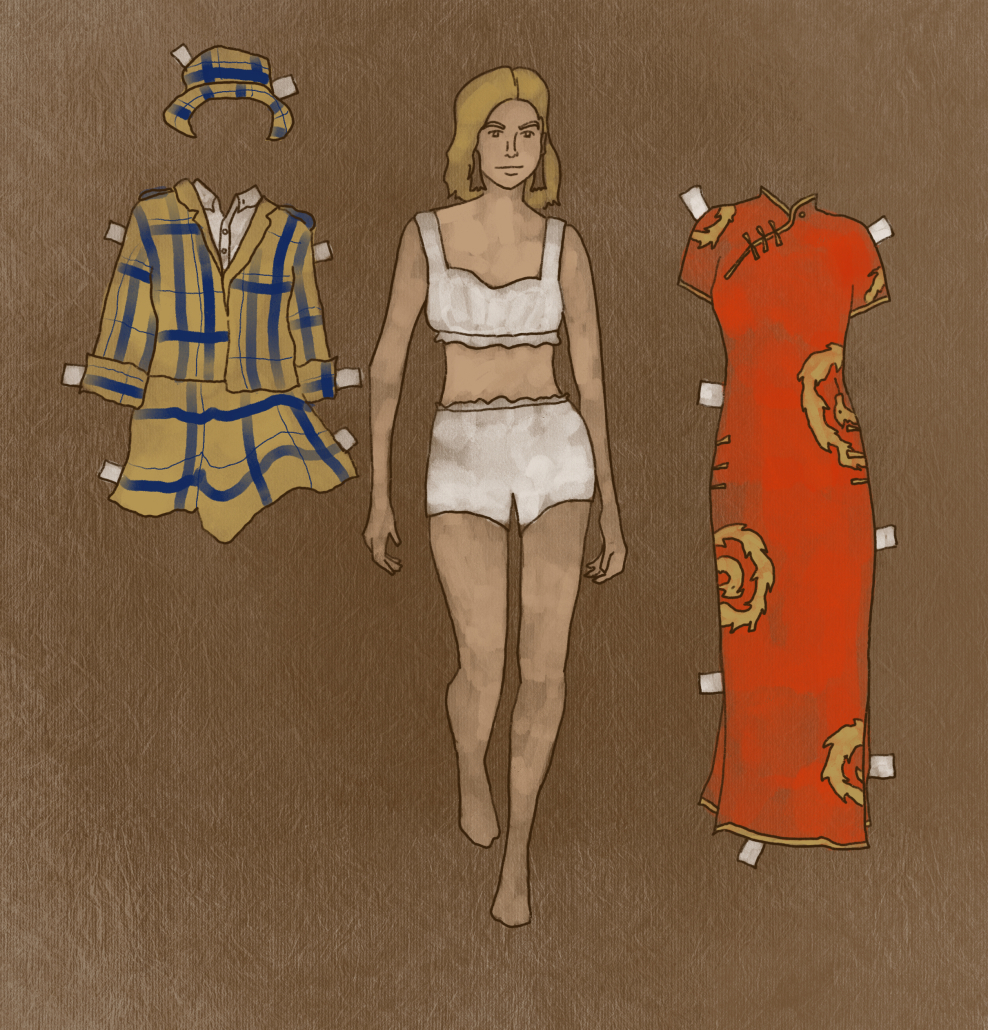That’s Fashion, Sweetie: Where is your ‘X’ from?

A new semester means new classes — something that I am incredibly enthusiastic about. Ever since I started school, there was nothing that excited me more than learning new things.
What also makes these classes fun, though, is drawing new connections between things learned in class to everyday passions and happenings. One connection I never expected came from my first lecture in “Technology and International Relations” in which we discussed Ötzi, the “Iceman,” and his clothing. While his bear-fur hat, hide-lined trousers and braided grass cape were for his protection against harsh weather conditions, the tied trousers and hat are incredibly similar to the fur style boots and beanies sold today. I was surprised again, when in the following lecture, my professor explained how the precious purple dye for Tyranian purple, also known as Phoenician red, came from the shell of the murex, a sea snail.
After class, my mind was racing on other forms of inspiration. I immediately thought of Moschino, a brand that is more obvious about its sources of inspiration, as seen in their McDonald’s, Barbie, Picasso and Paper Doll collections, perfect for their whimsical and fun brand identity and mission.
I couldn’t help but think about other brands that are not as clear. Part of it comes from more subtle sources of inspiration — maybe stemming from architecture, classical music, cultural happenings or even the history of the brand themselves, as seen with Raf Simon’s’ debut haute couture collection as Dior’s creative director in 2012.
Simon’s work is vastly different from uncredited designs and trends. Though, maybe my sudden increase in passion about the subject comes from my current intellectual property law class, but I think we’ve all experienced that frustration when you don’t get credit for your idea, design, etc.
In art and fashion, this happens a lot.
A classic case is Supreme taking artist Barbara Kruger’s style for their logo, which they openly admitted. But this lack of credit applies to trends as a whole and even begins to fall into cultural appropriation. I still remember the Twitter backlash in 2018 against the girl who wore a red qipao, a traditional Chinese dress, as her prom dress, when Twitter user Jeremy Lam virally responded, “My culture is NOT your goddamn prom dress.” Recently coming back into fashion due to Kim Shui’s modern takes means that there’s more cultural appreciation for qipaos, but, unfortunately, there’s also more appropriation through hypersexualized marketing and insensitive fast fashion replicas.
Another example? Y2K as a whole. Sometimes, the inspiration for Y2K culture comes from movie clips such as Cher’s matching yellow and plaid set from “Clueless” (1995). But the low rise jeans, monograms, butterflies and even the invention of the lettuce hem all came from the Black community.
Y2K was actually an expression of cyberpunk and excitement about the turning of the century, which is why Y2K style had so much metallic, silver and play with leather. Still, though, guess where a lot of this came from: Black artists and creatives. Although more aligned with “Afrofuturism” in the ‘70s, trends were popularized and secured into Y2K fashion history under singers like Missy Elliot, Janet Jackson and Destiny’s Child.
Asia has a grip on beauty influences and hacks, such as the current viral way to apply foundation with a stainless steel spatula for a lightweight application, which came from Korea. What about Japan? Their glittery eyeshadow and white eyeshadow palettes used for the inner corner sparkle have finally started to get their recognition. Of course, we also can’t forget the holy grail that is now a staple in many morning routines that stems from Chinese medicine: the gua sha.
So many other aspects of fashion don’t get the recognition they deserve. For example, door knocker earrings and hoops, first dating back to Nubia, present day Sudan, were popularized by the Latinx and Black community. Darker lip liner? Same source as the earrings.
But the common denominator of all of the above and other popular trends is not only that credit has not been given where it is due, but also the whitewashing of them in modern street style and everyday wear.
Even the gua sha has been whitewashed, with amethyst and rose quartz tools now being sold. Sorry, friends, but it’s not really about the stone. It is traditionally made from jade, a stone popular and imperative to Asian and Chinese culture, but the different stones for the same tool is just a creative marketing scheme for you to buy more of the same thing.

This appropriation has brought up sensitive moments and frustration among communities of color, as stories pop up on TikTok about Hailey Bieber’s nude lip liner routine deemed “brownie glazed lips.” While Bieber is celebrated because she, a white woman, popularized the routine, Latinx and Black creators recall being bullied and called “ghetto” for the same looks.
The fox eye trend, especially the hack of cutting falsies and extending them past the eyelash line in an upwards fashion to emphasize a Bella Hadid-esque, upward eye slant created similar conversation to the “brownie glazed lips.” The Asian community can only comment on the irony of the trend taking over after their younger years also included ridicule for their natural facial features.
Now, I’m not trying to blame Bieber or Hadid — they are public figures and influencers, whether they intend to be or not. Their actions, including makeup, lingo and fashion will be followed to a T by their loyal devotees. But it is important to remember who helped create it.
I do appreciate that people are becoming more sensitive to cultural appropriation — it is important to not take over the trends, whether intentionally or not, and it can be a little daunting to navigate trends with cancel culture and digital footprints. But what is not difficult is simply reflecting and asking, either yourself or a third party, if you are appropriating culture. These questions should be considered: if you’re playing into a stereotype of a group of people, if what you are wearing has cultural significance, and if your wearing of clothes/execution of trend trivializes a culture.
My advice: Be curious and do your research, but don’t be afraid. Human error is the one error that will never be cut — inevitably we will make mistakes. Just make sure that you never lose compassion and go through life with intention and an open mind. You never know what you’ll learn, and from whom.
Hadyn Phillips is a sophomore writing about fashion in the 21st century, specifically spotlighting new trends and popular controversy. Her column, “That’s Fashion, Sweetie,” runs every Tuesday.

